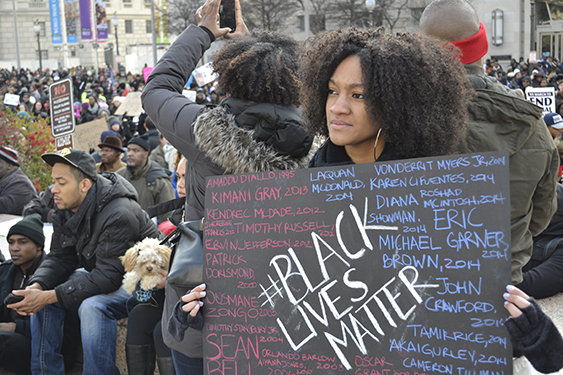U.S. leaders continue to see value in declaring racism a public health crisis in their communities. As of the Annual Meeting and Expo in Atlanta in November, 264 declarations have been made, according to an APHA tracking project. Leaders say the formal statements and resolutions, though not legally enforceable, help underscore the need for racial equity and justice.
Still, an analysis presented at the Tuesday session “Equity in Action? Assessing the Role of Community in Declarations of Racism as a Public Health Crisis” found that media coverage of racism declarations is framed as a government act, ignoring the work of community leaders who are often the impetus behind governments adopting the resolution. This framing has the potential of stunting community action: Local leaders following media coverage may not realize the extent that other community leaders play in doing the legwork to make declarations happen.
that media coverage of racism declarations is framed as a government act, ignoring the work of community leaders who are often the impetus behind governments adopting the resolution. This framing has the potential of stunting community action: Local leaders following media coverage may not realize the extent that other community leaders play in doing the legwork to make declarations happen.
The first racism declaration was made in 2018 in Milwaukee County. More governments adopted them after the murder of George Floyd in May 2020. Between May 2020 and August 2021, nearly 200 declarations passed.
In June 2020, over 800 articles were published by U.S. news media on the resolutions, said Pamela Mejia, head of research and principal investigator of the Berkeley Media Studies Group, which analyzes news coverage. During that summer, coverage remained brisk, but dropped to about 250 articles each month. From September 2020 to July 2021, coverage declined to about 100 articles a month.
More than 90% of the articles were about governments declaring resolutions, with only a smattering on the role of community organizations, Mejia said.
“Government officials dominated news about declarations of racism as a public health crisis,” she said. “It suggests that communities were less involved in calls to change than governments.”
Studies show that community organizations are integral to persuading governments to declare racism a health crisis. Efforts include informing policymakers and the community about the merits of a resolution through strategic communication and messaging.
But community leaders were rarely interviewed by the media about their work leading to declaration adoptions, Mejia said. Seeing no precedent, some community leaders might have failed to consider the notion of bringing a resolution locally.
Connecticut is one of the more successful states in this area, with 25 declarations passed at the local, city and state level, according to APHA’s tracker. Efforts by Tekisha Dwan Everette, who led Health Equity Solutions in Connecticut for several years, helped make this happen by leading efforts to educate communities. Working with government representatives on declarations of racism as a public health crisis can be difficult and time-consuming, she said. Many skills are needed to do it, but the most important may be perseverance.
“When you get a no, see the door to yes,” she said.
APHA’s tracking map links to the declarations and indicates when they were passed. Public health advocates can use the tool to check if a declaration exists in their community. If not, they can draft a declaration of their own and share it with local policymakers.
APHA also has a storytelling feature that highlights six localities that made declarations and their efforts to advance racial equity. In addition, the Association has conducted an in-depth analysis of the formal statements and resolutions.
Photo by DJMcCoy, courtesy iStockphoto.